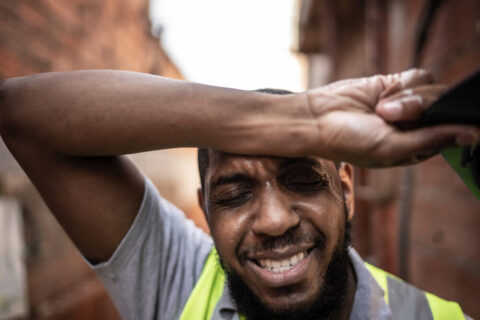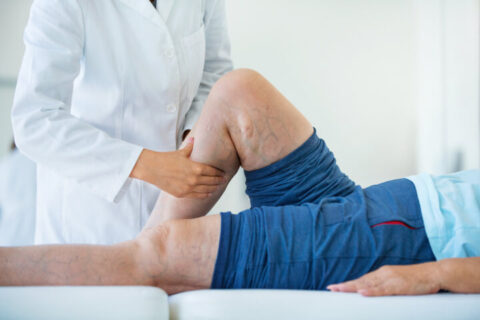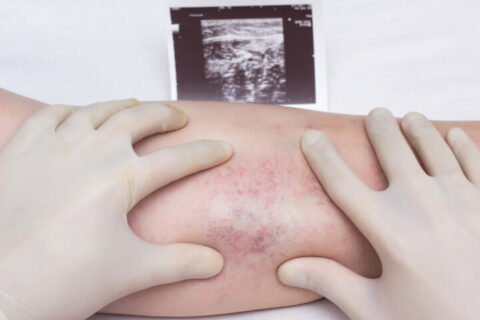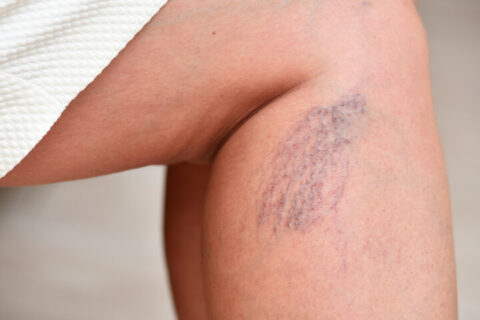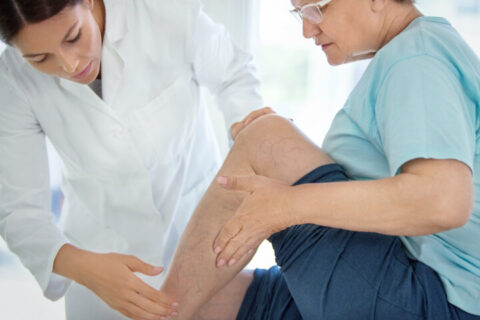Leg varicose veins are a common condition caused by chronic venous insufficiency due to venous reflux. Leg varicose vein is linked to symptoms such as heaviness, fatigue, or leg pain. People with diabetes are more prone to venous disorders because they have numerous risk factors for chronic venous disease (CVD), such as poor circulation, obesity, high blood pressure, and peripheral arterial disease.
But what’s the link between varicose veins and diabetes? Studies revealed that vein disease and diabetes mellitus frequently coexist. Moreover, diabetes is linked to more severe symptoms in 50% of patients. Primary prevention lowers the risk of long-term skin and nerve damage caused by venous stasis ulcers. These changes worsen over time, so early treatment is beneficial to a wait-and-see approach.
The Relationship Between Varicose Veins and Diabetes
Varicose or spider veins aren’t caused by diabetes. Diabetes and vascular disease, on the other hand, have been shown in studies to have a significant effect on health.
Diabetes makes people more prone to developing varicose veins. It’s especially the case for those with type 1 diabetes because lack of insulin causes hyperglycemia, which induces weight gain of the major causes of varicose veins.
Moreover, pregnant women with gestational diabetes can impair circulation in the extremities, which is more concerning than blood glucose. When blood flow slows, the leg veins struggle to return oxygen-depleted blood to the heart.
The less effective the veins are at returning blood to the heart, the more blood is allowed to pool, stretch, and eventually weaken the blood vessels, increasing the likelihood of varicose vein formation and peripheral artery disease.
The vein wall can subsequently weaken to the extent where they cause extreme pain, a dangerous blood clot, or even rupture, at which point treatment for varicose veins becomes less elective and more of a necessity. Diabetes induces high blood sugar levels, which can lead to weakened blood vessels.
As a result, the vascular system is more prone to infection like a leg ulcer. A diabetic patient has a higher risk of heart disease and diabetic neuropathy — along with an increased risk of complications. Varicose veins are typically unsightly, large, and cord-like.
They commonly appear on the superficial veins and form in the legs. However, varicose veins are also found in deep tissues. Spider veins can resemble a red or blue-ish cobweb appearance. Varicose veins can cause discomfort, weakness, swelling, and other unpleasant symptoms concerning their presence.
Diabetes can cause weight gain, and obesity contributes to the pathogenesis and progression of varicose veins. Varicose veins are typically associated with inflammation, which increases strain on the body’s immune and circulatory systems. Advanced diabetes can cause nerve and tissue damage in the legs, where varicose veins usually appear.
Since both varicose veins and diabetes affect blood flow, the risk of developing potentially fatal complications such as deep vein thrombosis increases. Venous ulcers and diabetic ulcers are other complications of varicose veins.
If an untreated varicose vein advances to a diabetic foot ulcer, the chances of a severe infection increase. Diabetic patients predisposed to varicose veins are required to be extra careful so they could decrease their risk as much as possible. Diabetes and varicose veins both benefit from a healthy diet and exercise.
Read More: What Is a Healthy Diet for Varicose Veins?
Treating Varicose Veins for Diabetics
There are numerous treatment options available for a diabetic patient and varicose veins. Regular exercise, stretching, lotions, creams, compression stockings that improve blood circulation, and a low-sodium, low-alcohol diet are the least invasive options.
Most of the best diabetes management methods can also maintain healthy veins and blood circulating back to the heart.
Stop smoking. Tobacco harms the lining of blood vessels. According to a study, people who smoke a pack per day are nearly 2.5 times more prone to develop CVI than nonsmokers.
Get the body moving. Sitting or standing in one place for an extended period can contribute to varicose veins. Moving around every half an hour or so is recommended by specialists. Proper exercise promotes healthy circulation.
Eat a nutritious diet. Consume plenty of fruits and vegetables, which promote good circulation and help shield the veins.
Practice proper weight management. Losing weight, if necessary, can alter varicose vein symptoms while also lowering the risk of developing arterial ulcers. Losing weight can also control blood sugar levels.
Drink a lot of water. Hydration allows the blood to flow freely. Bear in mind that unquenchable thirst could be a sign of mismanaged diabetes.
Take medications as advised. Diabetes medication as prescribed prevents the damaged veins caused by high blood sugar. The widely prescribed diabetes medication metformin is beneficial for a patient. According to research, people who took metformin for type 2 diabetes had a lower risk of developing varicose veins.
If these treatments don’t work, a vascular surgeon may recommend a few minimally invasive procedures available. A few of them are endovenous ablation therapy, sclerotherapy, and radiofrequency ablation.
They permanently eliminate spider veins by shrinking and shutting the blood vessels from view with a laser-fiber catheter. Early diagnosis and treatment of vein disease is the best discipline for improving vascular health and hindering future complications, particularly in people with diabetes.
Learn More: Are Varicose Veins Genetic?
Get Professional Help for Varicose Veins at The Vein Center Doctor

Both pre-diabetes and diabetes affect over 100 million people in the United States. Over 30 million Americans suffer from venous insufficiency and peripheral neuropathy, but only 10% take medication. Our goal at The Vein Center Doctor is to improve venous disease education, notably in this high-risk population of diabetics with venous disease. By achieving our vision of helping people about the dangers of untreated vein disease, we’re encouraging them to get their vein disease checked and treated at The Vein Center Doctor.
If you have any questions or are ready to arrange an appointment, contact our skilled vein specialists to start your journey to wellness. We ensure the safety of veins all day, every day, and our center has been among the first in the United States to specialize solely in vein care. Visit us at The Vein Center Doctor today and enjoy healthy veins for life.


